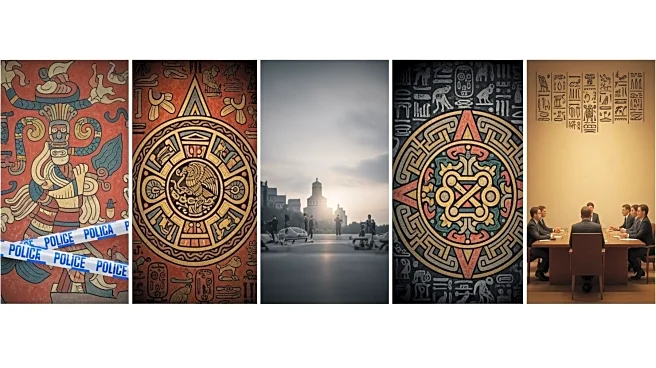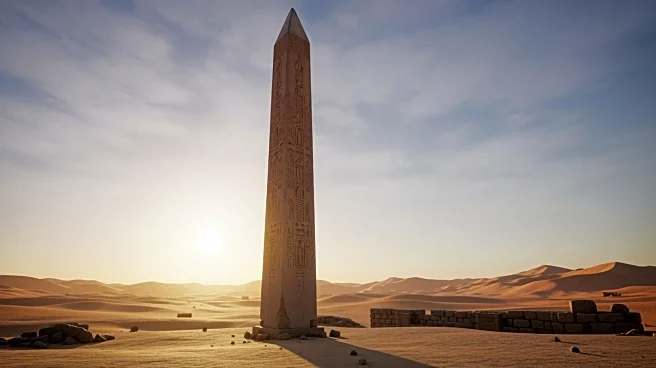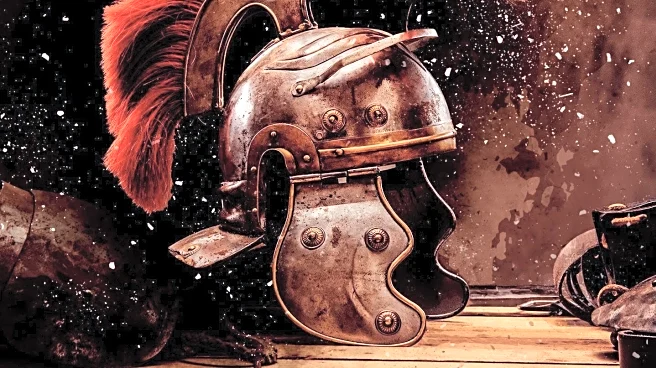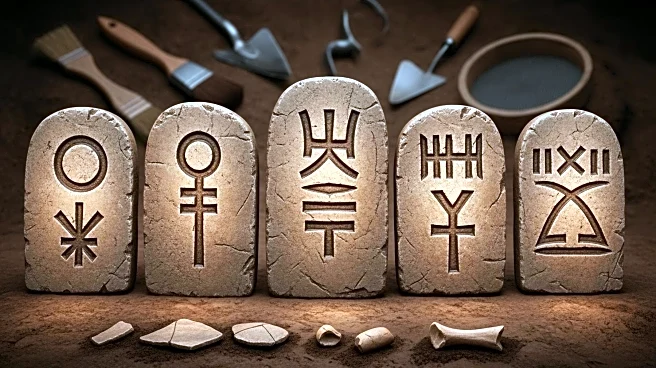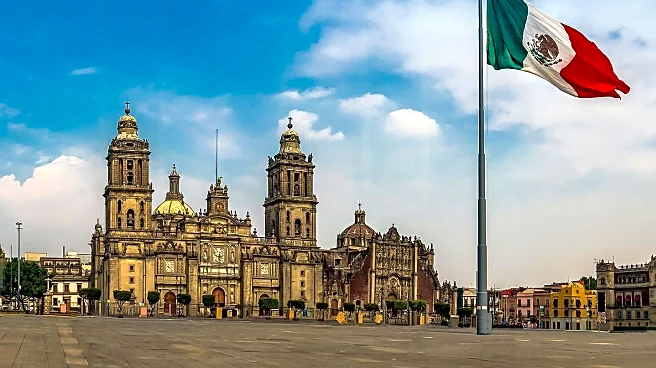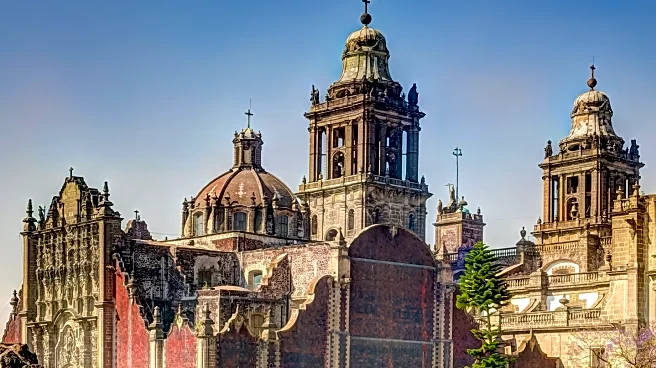What's Happening?
Recent research has uncovered a potential structured language within the murals and artifacts of Teotihuacan, an ancient city in Mexico. Scholars Magnus Pharao Hansen and Christopher Helmke from the University
of Copenhagen have identified repeated clusters of symbols on murals and pottery that suggest a coherent writing system. This system appears to be an early form of the Uto-Aztecan language family, which includes Nahuatl. The findings challenge previous beliefs about the linguistic history of the region, suggesting that Nahuatl or related languages may have been spoken in Teotihuacan during its peak. The research indicates that these symbols mix visual logograms with phonetic signs, a method seen in other ancient scripts but rare in Mesoamerican archaeology.
Why It's Important?
This discovery could significantly alter the understanding of cultural continuity in central Mexico, providing insights into the daily life, beliefs, and identity of Teotihuacan's inhabitants. It challenges the timeline of when Nahuatl-speaking peoples arrived in the region, suggesting a much earlier presence. This could reshape regional history and strengthen cultural links between Teotihuacan and later civilizations. The ability to read full sequences of text rather than just identifying objects or deities could offer a deeper understanding of Mesoamerican cultures and their development.
What's Next?
Further research is needed to validate the proposed writing system by finding more examples of the symbols used consistently across different contexts. This could lead to a more comprehensive understanding of the language and its role in Teotihuacan society. The findings may prompt a reevaluation of other Mesoamerican scripts and their potential linguistic significance.
Beyond the Headlines
The research highlights the importance of interdisciplinary approaches in archaeology, combining linguistic analysis with archaeological evidence to uncover new insights into ancient civilizations. It also underscores the potential for ancient scripts to reveal complex social and cultural dynamics that have been previously overlooked.
